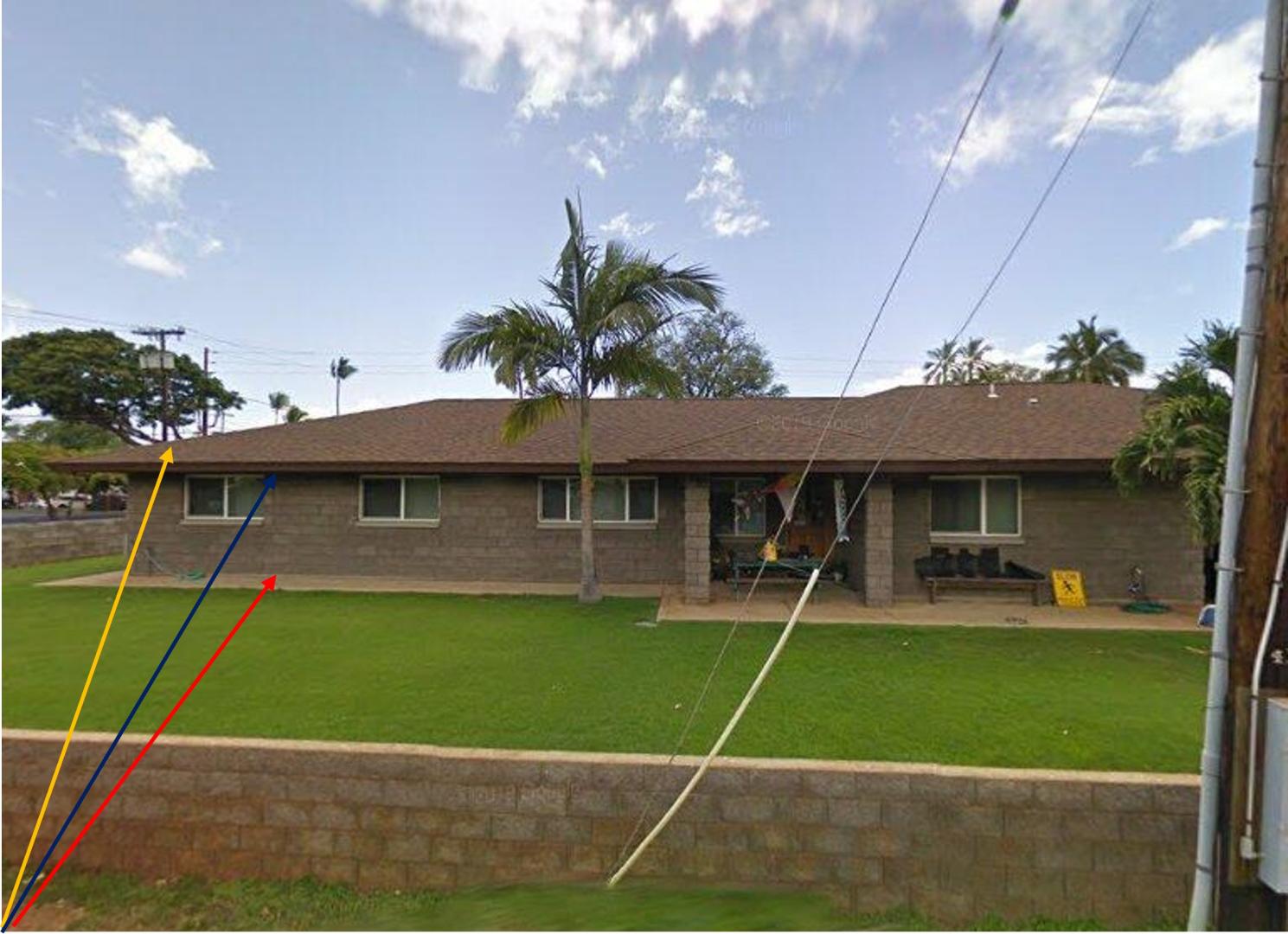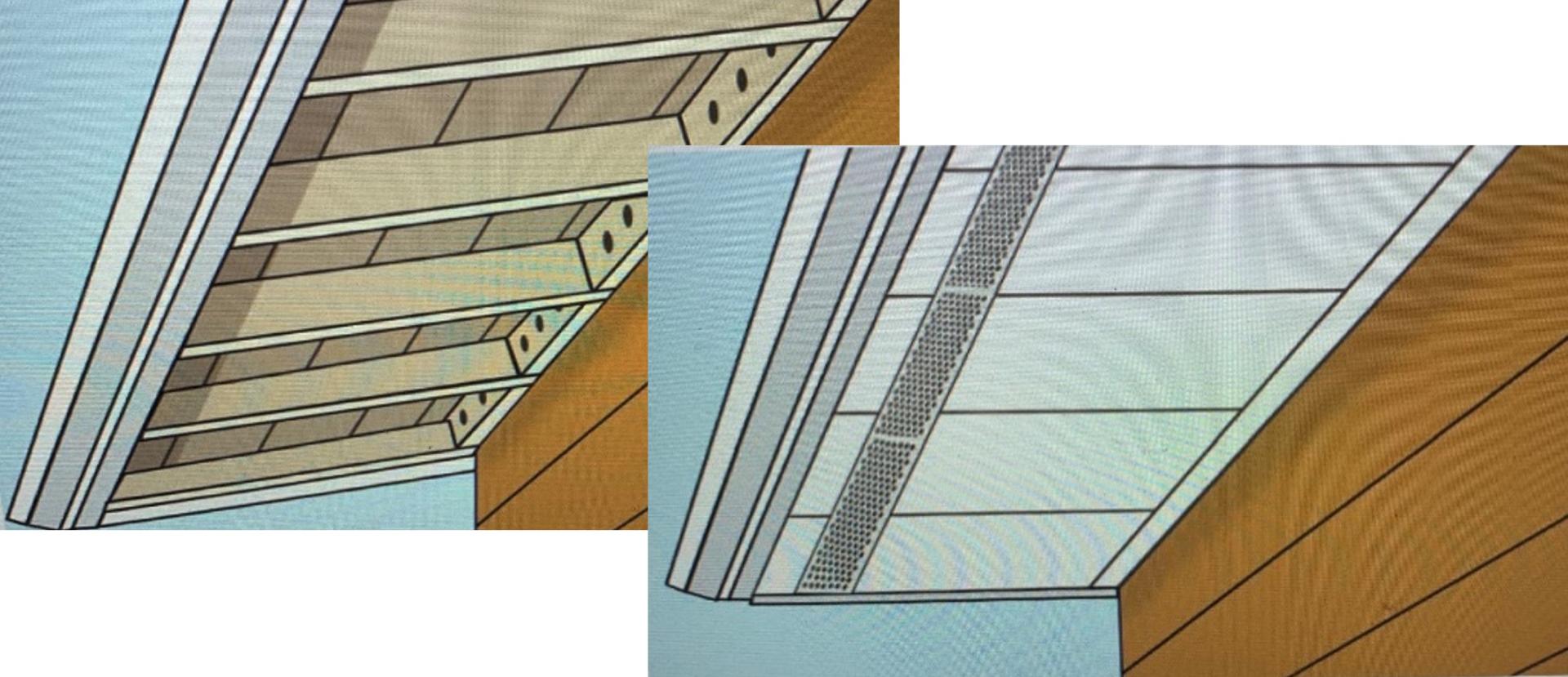LAHAINA, Hawaiʻi – Retired law enforcement officer Chad Viela and his wife, Laurie, took a couple of years to build their dream home. They believe the mitigation strategies used during construction helped their home survive the deadly wildfires that devastated the Town of Lahaina in August 2023.

Heralded as the deadliest wildfire in modern U.S. history, the Lahaina wildfire damaged 2,207 structures and burned 2,170 acres, according to the Pacific Disaster Center.
With exception of smoke related damages, the Viela’s 2200 square-foot home was unscathed. The home escaped the flames with little more than smoke damage that seeped in through the vents.
The most effective way for homes to withstand a wildfire is a “coupled approach” that considers the exterior construction materials and how they are put together, as well as the surrounding vegetation and other near-home combustible materials. Selection, location and maintenance of vegetation and other combustible materials on a property can reduce the chance of a wildfire enveloping the home.
Reducing the vulnerability of their home to ember ignition may have been a contributing factor to the home’s survival.
According to the “Home Builder’s Guide to Construction in Wildfire Zones”, there are three ways that a wildfire could ignite a home: exposure to wind-blown embers, direct contact by flames, or radiant heat exposure. Radiant heat is what you feel standing near a burning object. During a wildfire, the heat source could come from a woodpile, tool shed or a large shrub. Of these, exposure to wind-blown embers is considered the most important.
Using friends with construction skills, the Vielas spent two years building their home. They couldn’t afford a contractor, said Laurie, an office coordinator.
Construction began with a slab-on-grade foundation. The exterior of the home is masonry; the windows double paned with tempered glass, which is three to four times more resistant to heat exposure. Because exterior walls are susceptible to flames, conductive heat and radiant heat, the Vielas made their exterior walls fire-resistant.
The roof has grade A asphalt shingles and is nearly completely covered with solar panels. The fire rating for a roof covering is either Class A, B, or C. Class A provides the best performance.
“We have 60 solar panels. I really believe that the solar panels protected the roof from the flying embers,” Laurie said.
It’s important to note, however, that solar panels on the roof can become vulnerable to wildfires if debris accumulates underneath them.
The home has soffited eaves. The soffit is the material beneath the eave that connects the bottom edge of the roof with the house wall, preventing an exposed siding underneath. The under-eave area provides a point of entry for flames if nearby vegetation or other materials are burning.

Attention was also given to defensible space. It is the area around a building in which vegetation, debris or other types of combustible fuels have been treated, cleared, or reduced to slow the spread of fire to and from the building. It consists of three zones.
Zone 1 extends from 0 - 5 feet from buildings. The Vielas constructed a concrete sidewalk that surrounds the perimeter of the home in this zone. Zone 2 extends from 5 - 30 feet from buildings. A small garden located 6 feet from the home is planted in this zone and is constantly irrigated. Zone 3 extends from 30 - 100 feet. The Vielas have one tree in this zone.
“As far as trees, we only have one tree in the entire yard, and it is far away from the house, almost at the property line. It’s always trimmed back. There are no loose branches. Our entire yard is always manicured,” said Laurie.
Research and post-fire assessments have shown that property owners can protect their homes and businesses against wildfire by addressing three clear sources of vulnerability: materials and design features used in building the home or business, the landscaping vegetation located immediately adjacent to the home or business, and the general vegetation and other combustible materials and items on the property surrounding the home or business. Each of these sources can be addressed with maintenance, appropriate choices in building materials, design improvements, and vegetation management.
During a wildfire, millions of embers can land on a home and the surrounding landscape. That is why it is so important to make sure that the home and area surrounding the home, including landscape, fences, outbuildings, etc., are routinely and carefully maintained.
The survival or destruction of your home during wildfires is largely dependent on the steps you take to reduce the opportunity for the initial ignition of your home.
For additional information, visit:
Lahaina blaze now the deadliest in modern U.S. history: Recap (nbcnews.com)
Protecting structures from embers during wildfires (fema.gov)
Timeline: How the deadly wildfires took over Maui day by day - ABC News (go.com)
Wildfire Home Retrofit Guide (readyforwildfire.org)
FEMA_2008_P-737-Home-Builders-Guide-to-Construction-in-Wildfire-Zones.pdf (defensiblespace.org)

